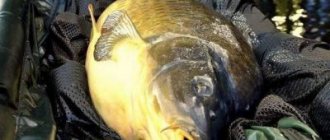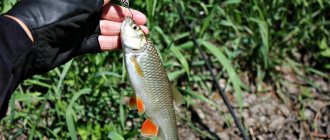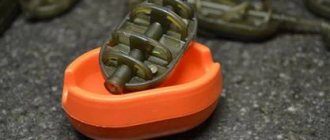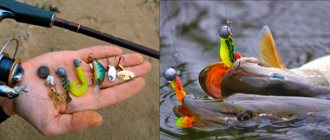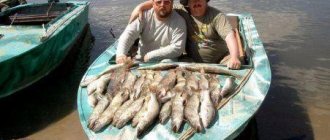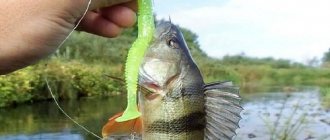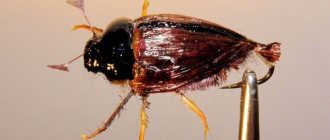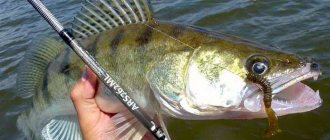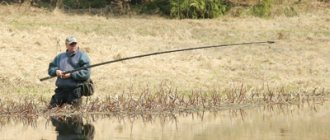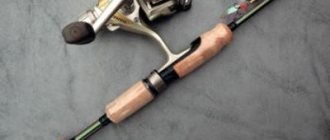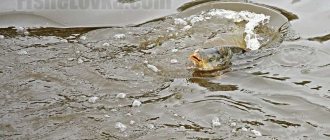What is jig or jig fishing? Spinning rod and reel. Choice of fishing line. Jig baits. Jig wiring. Jig fishing rules. Finalizing the jig.
Greetings, dear fishermen, on the pages of the FishX.org website! Today, I will try to talk in detail about jig (jig fishing), about its appearance, I will give the “golden” rules of jig, and I will give advice. It is unlikely that any spinning fisher has not heard of this method of wiring as a jig. This is understandable, all fishing magazines write about it, quite a lot of videos and programs have been shot where we are taught this method of fishing. But what’s interesting is that there is practically no information anywhere about how and where this method came from, who invented it, how it won our hearts. And the most interesting thing is that it served as a kind of impetus that prompted me to master this method.
What is a jig, history
The jig method of posting, according to many fishermen, came to us from abroad, about 20-25 years ago. At the same time, fishermen made some attempts at fishing with this method even before their official acquaintance with this gear. So, I clearly remember how one grandfather back in 1983, having cast a spinner, waited a few seconds, and then carried out a uniform reeling, while either lowering the tip of the spinning rod to the water, or raising it 1-1.5 meters above the water surface . If you analyze its actions, you can see in such a reeling a real jig, only with a not quite standard bait.
History is history, but the fact that in our country, to one degree or another, the method and idea of jigs were known is beyond doubt. In the present understanding, jigging is divided into many directions, so that an ordinary fisherman from the outback sometimes does not know about the great variety of ways to retrieve bait. Others, on the contrary, without knowing the special names, intuitively and in practice have chosen “their” principle of playing with bait and use it successfully.
Jig fishing concept
Jig fishing implies that the fisherman knows such concepts as jig sinkers, which can be of different shapes and designs, that he has a clear understanding of the spinning test, that the fisherman made the right choice regarding the reel (spinnerless and inertial reels), and has information about the advantages of braid and the special qualities of fishing line, etc. Modern jig fishing is a separate direction, an art, having mastered which, you can count on a decent catch.
Jig reel
Inertia-free
Characterized by simple design and ease of operation. There is a fairly extensive range of such products on the market, and choosing the right option will not be much of an effort.
The main thing is that the product meets the following requirements:
- Instant reverse stop.
- Equipped with an enlarged spool.
- The spool and roller are made of high quality material.
Inertial
Modern models of multiplier inertial reels are practically not inferior in their performance to inertia-free products. They attract consumers with the high speed of winding the fishing thread, and allow them to feel the signal notification of a bite through their fingers (from the fishing line).
Spinning rod and reel for jig
Now I’ll tell you how to choose the right spinning rod for jig. What are the main points to pay attention to when choosing gear? What are the requirements for the reel that will be installed on the fishing rod?
When choosing a spinning rod for jigging, it is important to understand that plug-in models are much better than telescopic ones. Plug-in spinning rods are more expensive than telescopic ones, but their main advantage is sensitivity. It is important to know that there is no universal fishing rod. When choosing, you should be guided by many rules, such as where you plan to fish, what bait will be used, etc. Now let's figure out how to choose the right spinning rod for jig (read about what a jig is here).
Test and length of spinning rod
You immediately need to decide on the dough and length. Experienced jigging anglers recommend options from 2.5 to 2.7 meters in length if fishing from a boat and 3 meters long if from the shore.
It is important to select the test responsibly, but you should not focus only on this characteristic. It is important to know that on inexpensive spinning rods it may differ slightly and may not even correspond to reality. High-quality European-made models may have an overestimated limit, while American manufacturers, as a rule, underestimate the upper limit. You can use baits that weigh more than the manufacturer recommends, but only in this case it is necessary to make some changes to the casting technique, for example, casting will have to be done with less effort.
However, when choosing, you should know the following guidelines. So, with a spinning rod length of 2.4 meters, the test should be no more than 15 grams, with a length of 2.7 meters, no more than 25 grams.
Lever
The spinning rod should be comfortable and this is important because the rod is constantly in your hands. The most convenient models are those that have a handle made of cork material. It is important to note that if the handle is made of cork, this will automatically indicate that the spinning rod itself is of high quality. The convenience of a spinning rod depends on the length of the handle. The correct length is considered to be equal to the length of the elbow of the person who will fish with a spinning rod. However, the choice of handle length should be based on how the fishing will be done. If you will be fishing from a boat in a sitting position, it is recommended to give preference to models with a short handle; if standing, it is better to buy a spinning rod with a long handle.
Build
Spinning rods with almost any action are suitable for jigging. A rod with a complex action is more suitable for fishing at great depths, when, in addition to pike perch and pike perch, the bait can be attacked by catfish or pike. The most important thing when choosing a fishing rod regarding the action is to pay attention to the tip, which should be thin and durable. During fishing, it is necessary to constantly monitor the bait, and this can only be done if you use a coal spinning rod with a fast action. The main advantage of this option is its light weight, which increases convenience and allows you to quickly master the casting technique. With the help of such a spinning rod, the bait can be controlled throughout the wiring. The cord transmits any touch to the bait to your hands, which allows you to timely detect and respond to a bite.
Coil
Once you have decided on the choice of spinning rod for jigging, it is important to choose the right reel that will be installed on it. The reel should be lightweight, compact and have a spacious spool. It is important that the chosen reel also has a high-quality line roller and easy, free line release. The choke should open and close easily and quickly; this is what will determine the quality of casting and the convenience of casting and landing fish.
Characteristics
Rod test
This indicator reflects the permissible weight of the bait, which does not impair the normal operation of the spinning rod: the ability to make high-quality casts over long distances, feel the wiring, etc. The optimal indicator for a jig is 10-40 g. If fishing is carried out from a boat, then casting is not always advisable. Therefore, the stick will be suitable with a smaller test load. But long-distance casting of heavy jig heads and fishing at great depths should be carried out with a high-test spinning rod.
Length
The ideal length of the tool for the jig fishing method should be 240-270 cm. A shorter rod may cause difficulties with casting range, given the light weight of the bait. You should also not choose a stick that is too long, although if a professional fisherman is working, then a spinning rod with a length of 330 cm is quite suitable for him. For the amateur level, 240 cm is quite enough.
Build
Here you can use a spinning rod with both fast and slow action, which is equally effective. Choosing the right tuning is much more difficult than deciding on the length. This parameter cannot be determined by eye, it needs to be felt. The structure of the spinning rod allows you to understand how flexible the tackle is and how quickly it reacts to a bite. Even with fast tuning, one can observe increased sensitivity to the slightest influence, and this is provided that only the tip of the instrument is bent. It is also called end formation. There is a parabolic version of the action, slow, where the entire length of the rod bends.
When choosing a system, you need to focus on the priority of the tasks:
- If long and soft casting is important, then you should take a slow one.
- If the information component and the sensitivity of the tackle to jig wiring are important, then a fast action is suitable.
A good solution for jig fishing is the use of a combined action, where under light loads the performance characteristics of a fast action appear, and in case of serious impact - a parabolic action. Telescopic rods are the worst at signaling bites. Most often, it can only be detected visually. The tip of the spinning rod, due to numerous connections in the links of the tool, cannot transmit a bite signal to the angler’s hand.
Material
Here it is important to decide on the length of a particular fishing rod, and based on these parameters, choose the material:
- If we consider a 3-meter rod made of simple fiberglass, which has significant weight, then certain difficulties will arise during its operation.
- If we are talking about long fishing tools, then you need to give preference to carbon fiber or composite materials.
Which to choose?
To finally make a decision on purchasing a specific spinning rod model, it is recommended to pay attention to:
- For compliance of the model with the expected hunting conditions, the type of fish that will be hunted, the weight and shape of artificial baits, and casting range.
- Compliance with price and quality: an excellent tool and well worth it. If we consider a budget option for gear, then the price should not be lower than $100 (Daiwa Tornado - Z, Shimano Catana CX, Bass Pro Shops, Volzhanka are considered worthy models). It is better to purchase such tools in specialized stores, where there is a guarantee and a certificate of product quality.
Jig baits
The topic of choosing special jig baits is very interesting. Many fishermen today are firmly convinced that jig baits are only baits made of soft material. In reality, it's not that simple. For example, silicone baits, foam rubber, rotating spoons and spoons can be successfully used as jig baits, but what can I say, you can jig with the vast majority of baits. The main thing is to have an understanding of what you are doing and the ability to see and assume what should happen in the final result. Even changing the weight of the jig head to a larger or smaller one can give a result that the fisherman did not expect.
If you prefer to fish with a spinning rod, you definitely need to master the method of fishing with jig baits. After all, thanks to its characteristics and playing technique, using a jig you can fish not only the entire reservoir, but also thoughtfully tap the bottom, climb into the most littered areas, where, as a rule, the predator is located. There are a lot of jig baits; in the store, your eyes widen from their variety. In addition, there are a great variety of special hooks and sinkers of different shapes, which significantly increase the fisherman’s chances of catching the desired trophy.
Jig baits
The use of jig baits makes it possible to hunt any predator, regardless of the type of reservoir, depth, in the current or in its absence. They can fish even the most difficult places: snagged, rocky and overgrown with vegetation. The main thing is to follow the rules for equipping such baits for each specific case.
Depending on the game, jig baits are classified into:
- Active (vibrating tails, twisters), which are in particular demand among Russian spinning fishermen.
- Passive (all possible variations of exotic living creatures in the form of lizards, crustaceans, mollusks, etc.), with which you can also catch whitefish.
To make fishing effective, you should choose the right size, color and material of the jig bait. To provoke a large predator to bite, you should select a large bait and vice versa. So, for pike a bait with a size of 10-13 cm is suitable, for pike perch you need to put a bait of 7-9 cm, for perch 3-6 cm. If the bait is made of soft material, then the game will be quite active and lively. But given the structure of such a product, it will not last long (it will not withstand bites from the teeth of a predator). If it is a bait made of hard material, then the product will not lose its qualities, despite the injuries received during the fishing process, but it will be difficult to attract the object of the hunt. They produce jig baits in a wide range of colors: from brightly aggressive to naturally calm. In sunny weather, it is recommended to use natural colors, and in cloudy weather, brightly saturated shades. The most popular type of jig baits are vibrating tails, which imitate live fish. They can be in both narrow and wide forms.
Jig wiring
In a general understanding, if we “smooth out all the corners” and give a detailed description of the jig fishing method, we can assume that this is a method in which layers of water are fished, most often using the “step” method, i.e. the bait, in addition to its game, acquires additional motor functions , which are asked by the fisherman. This attracts fish, because the naturalness of the game and its resemblance to a live, wounded fish depend on the quality of the jig and the selection of the bait. Now, I think, many fishermen can remember their experience when they carried out similar fishing with ordinary spoons and tackle. This is a jig, one of its variations. So, know that not everything that “hurts the ear” of a modern fisherman is new for the domestic fisherman, we just called it a little differently in our time.
Rules for jig fishing or jig fishing
Well, we’ve come to the “golden” rules that it is advisable to follow if you decide to fish with a jig. All these rules are probably not mandatory, but I know them, and I adhere to them, and whether you follow them is your decision, but you need to know.
A little history
For several years now I have been successfully catching predators (pike, pike perch, perch) using jigs. It would seem that so much has already been said about this tackle that it is almost impossible to tell anything new. But, as practice shows, beginners and experienced fishermen who want to master jig fishing quite often make the same mistakes, which results in a complete lack of bite and a spoiled mood. Jig fishing, like everything in life, has its own rules and secrets, knowing which you can save a lot of time and spend quite productive time on the pond.
I will try to briefly outline the basic rules of jig fishing, which help me in most cases to stay with the catch. I will not describe each point in too much detail in order to give free rein to your imagination and put into practice what you read. It seems to me that this approach is the most optimal, since some understatement encourages action. So, let's begin …
Jig fishing rules
- The right spinning rod is the key to success. You can talk about testing the spinning rod, its structure, etc. The main requirement is this: if you fish with light baits, the tip of the spinning rod should bend moderately under their weight and play back. This is necessary in order to be able to determine the bottom, bite and other parameters using the tip of the spinning rod. If, for example, you put a 10 gram jig head on a spinning rod designed for baits up to 90 grams, it will be impossible to catch quality fish. Therefore, the spinning rod must match the bait used. As a last resort, you can use a spinning nod, which is to some extent capable of reacting to the movement of the bait on the bottom and displaying everything that happens to the bait. The spinning rod should be no longer than 2.7 meters. Many people fish with longer spinning rods, but I personally didn’t like it, since the casting range increased slightly, but observing the bait somehow became more difficult.
- Choice of bait. Silicone baits (vibrating tails, twisters, frogs, worms, etc.) and foam fish are more suitable for jig fishing. But sometimes, fishing with ordinary baits (spinners, for example), which I use using the jig method, gives excellent results.
- You can fish with a jig from deep to shallow water and vice versa. For some reason, many fishermen adhere to one of the options.
- You always need to let the bait sink to the bottom first, and only then implement one or another method of play.
- Braided fishing line is preferable to fishing line, since at great depths and currents it is braided line (due to the fact that it does not stretch) that allows you to almost directly feel the bait and determine the bottom topography. The fishing line, due to its elasticity, significantly complicates these processes and prevents adequate hooking.
- It is advisable to have jig baits of different sizes available.
- Jig weights should be available in different weight distributions and different shapes
- If one method of playing with bait does not give results, you need to try another. And only after using several wiring and playing options, change the place.
- Change baits often. I have observed how some fishermen fish almost their entire fishing trip with one bait. If there are no bites on the bait within 30-60 minutes, try changing it. Change baits more often - it works.
- Control the bait. Important rule. Even when you need to create a slight slack in the line, the bait must be under control. This is achieved by moderate line tension and a sense of acceptable sagging, when you know that by slightly lifting the rod, the tension will be restored.
- The bottom is the main place for jig fishing.
- If you find yourself in difficult places, fish them using unhooked jigs. Sometimes, it is better to lose 2-3 baits, but at the same time pull out a trophy.
- The success of jig fishing directly depends on the distance traveled on the reservoir. You have fished the area, move on. Jig fishing is active fishing.
- After each fishing, inspect the rings on the spinning rod and the line guide. Braid has such an unpleasant property as cutting rings. It’s unpleasant when the ring of a spinning rod is rubbed at the most crucial moment and at the same time tears the braid.
Just 14 simple “golden” rules for successful jig fishing. But in order to experience all this from my own experience, I had to spend more than 2 years. And the spinning rods broke, the rings tore the braid, bites were missed, etc. Don’t repeat the mistakes of others, have fun fishing. Let's move on to the improvements.
Jig? Wobbler!
10/04/2012 For most spinning anglers, autumn is the best time to catch pike perch with a jig. When the water cools, it gathers in flocks and moves to deep places, moving to channel dumps, where it is most convenient to use jig baits. It’s hard to argue with this, and so, of course, it is, but with serious reservations. In the fall, jig is not always the best way to catch pike perch. It often happens that preference should be given not to jigs, but to wobblers.
WHY wobblers
Regardless of the season, the main feeding time for pike perch is night and morning and evening twilight, and hunting locations are directly related to the location of the fry - its main food. The safest and feeding zone where the fry always gather is the coastal area. If in daylight you should look for pike perch on riverbed dumps, then at dusk it is better to radically change the place and switch to fishing in the coastal zone.
The question is - what to catch him with? Various spinners require quite energetic retrieving, which is rarely liked by predators. Jig baits are also not the best option when fishing the coastal zone. In the dark, their effectiveness decreases. In fact, only wobblers remain.
They have many advantages compared to other spinning baits. With their play, they influence the lateral line of the predator; some are equipped with sound chambers with metal balls, which attract fish from a great distance with their sound. However, the main advantage of wobblers is that they can work at a minimum wiring speed and even during pauses. As far as one can judge, situations are not uncommon when a passive predator can only be caught using wobblers. But even when the activity of pike perch is high, correctly selected wobblers in skillful hands still turn out to be more effective than other baits. As for the main disadvantage of wobblers - the impossibility of long-distance casting - it is not needed when fishing the coastal zone.
PROBLEM OF CHOICE
What types and models should you prefer? With all the huge number of all kinds of wobblers that we see in stores, the choice turns out to be very difficult. It is impossible to test all models while fishing. Buying everything you like is too expensive. There is only one way out: listen to other people’s advice and gradually accumulate your own experience. My friends and I, having been fishing for pike perch with wobblers for a good dozen years, have developed a certain approach to choosing baits for ourselves and made our own rating of the baits that are most suitable for coastal fishing for pike perch in reservoirs and other bodies of water with weak currents. Perhaps our experience will be useful to other fishermen.
Considering that pike perch in the coastal zone hunts for fry, our wobbler should also resemble a fry in its behavior, shape and size. Accordingly, the choice is limited to minnow wobblers. Further, as practice shows, the bait should move not in the water column, but above the very bottom. However, you should not choose models with such a depth that they literally plow the bottom with a blade. When the bait regularly scrapes the bottom, this is a sure sign that very soon it will remain there. But if the wobbler only occasionally pokes into the bottom, then this often turns out to be the best option. Here you have to constantly experiment.
The task of selecting suitable wobblers is greatly simplified if you fish in “your” body of water. When you imagine the bottom topography at your favorite points in sufficient detail, it is much easier to decide on bait. For example, on our “home” reservoirs - Ikshinsky and Klyazminsky - when fishing from the shore, wobblers with a depth of up to two meters are best suited. I think this is true for most other reservoirs near Moscow.
It must be taken into account that when fishing for pike perch, pike are often caught in the same places and using the same baits. This happens mainly when fishing begins before dark or ends after dawn. There are cases when pike actively take at night, but this is usually observed in places where there is coastal lighting.
Like pike perch, pike at shallow depths in the fishing area are best taken with minnow wobblers. The difference is that she prefers slightly different types of wiring. Pike reacts better to sudden movements of the bait, as when twitching, but pike perch does not like this, it prefers a leisurely, smooth and measured game. Among our wobblers there are models “sharpened” for both “pike” and “pike-perch” wiring; there are also more universal ones, suitable for both types of wiring.
DO NOT SPARE MONEY!
So, for fishing in the coastal zone, minnows with a depth of 0.3 to 2 meters are mainly suitable. This is a general approach, but then a specific choice begins, since there are a lot of such models, and even in a wide variety of colors. What to choose?
The first thing you have to come to terms with is the price. Serious companies approach the development of their models very carefully. Each one is tested for a long time and brought to fruition, sometimes for more than one season. The result is real masterpieces, which immediately begin to be copied by simpler companies, and now, it seems, they are already copying copies. Today you often see a familiar model under a different logo on a shop window, but you never know in advance how it will work. All fishermen face this problem one way or another.
SPECIFIC
If we talk specifically about models for catching pike perch, then out of all the variety of wobblers, Lucky Craft and ZipBaits are in first place.
It is almost impossible to determine which brand is better, although they have some differences in their approaches to wobbler construction. ZipBaits baits have excellent flight qualities due to the original system of magnetic balls. Lucky Craft models do not have such a system, and they are slightly inferior in range, but they win the game. In addition, they also have balls: they serve to balance and ensure straight flight, so that overlaps when casting are extremely rare.
If we talk about the most suitable models for coastal pike perch fishing from Lucky Craft, then this is undoubtedly the Pointer series. Here it is worth highlighting the 97th model, equipped with three tees. When the predator is active, the number of hooks does not matter much - when it is grabbed, the bait most often ends up in the mouth. When the pike perch is passive, it often takes the wobbler very carefully, and here the third tee comes in very handy.
Pointer 65 goes to America under the name B'Freeze and enters our market under the same name.
B'Freeze 65 is also available in a version with increased depth (DD) due to a larger blade. B'Freeze 65DD goes to a depth of up to 1.7 m, while the regular one goes up to 1.3 m.
Very interesting are the Pointer 78 and Pointer 97 models, produced for the Japanese market in the Real Skin version. They are covered with natural fish skin with attractants. At first we thought this was just a marketing ploy, but it turned out that wobblers catch really well. With active biting within a week, there is no living space left on them, but they continue to work. Real Skin is 15–20 percent more expensive than the same, but ordinary, plastic ones.
Pointer 78 can be considered a semi-jerky wobbler. It is well suited for catching pike with an active twitch, when the bait makes sharp jerks from side to side. In general, the Pointer 78 can perhaps be called the most universal model: with active twitching it catches pike, and with calm fishing it catches pike perch. For pike perch, a smooth play of the bait is more suitable: you need to drive the wobbler with stops and accelerations, and this can be done with both a rod and a reel.
In addition to the Pointer series, Lucky Craft is worth highlighting the Flash Minnow Tr wobbler. Its distinctive feature is its excellent casting range, in this it is in no way inferior to ZipBaits models.
If we talk about ZipBaits wobblers, then our clear leaders are Rigge 90, 76 and 56, as well as Orbit 65. These are not only excellent models, but also well-known. So much good has been said about them that it is not worth repeating.
COLOR: CREATIVITY
If you look at my boxes of working wobblers, you will notice that about half are models of natural colors, and half are various acidic ones. If the fishing is during the day and the water is fairly clean, then these are, of course, natural colors; if it is twilight or night, then you have to try everything.
Sometimes on models with natural colors we apply a fluorescent stripe with a special varnish, and this often works. Sometimes we do the opposite. For example, black stripes were applied to an acidic Jib using a regular alcohol marker - the catchability increased noticeably.
Despite everything said above in favor of expensive models, in my work box there are also models from a cheaper category. Often they are simply necessary. Such wobblers will be needed, for example, when exploring new points where the use of expensive models is simply unreasonable. “Scouts” can be any model, but they must have a known and proven depth, otherwise they will be of little use. I often start fishing with the Hardcore JB-90 SP from Yo-Zuri. It happens, by the way, that having started with it, I continue to catch with it. Kosadaka lures, for example Ion XS90F, perform the same role for me. These wobblers are made to a good standard and are not much inferior in appearance to branded ones, but their catchability is still lower.
| Author | Timofey Zykin, Moscow |
| Read the article | 8629 |
Rating: 3.35
Finalizing the jig
Let's look at a simple modification of the jig, which sometimes helps in the absence of a bite. Don’t think that this is the only thing that can be done with a jig, there are a lot of options for its modifications, and I will definitely talk about them, but in other articles.
There are situations when not a single bait gives the desired result. Neither wobblers, nor jig baits and spoons with spinners, nor sbirulino - the result is practically zero. Although, by all indications, the fish seem to be there and should be biting. I found myself in such situations quite often. Yes, and you probably have had cases when, when retrieving a bait, you observed how a large fish literally leads it to the boat, and then simply goes into the depths, without being tempted by the beautiful game of bait. What to do in such cases?
Changing the fishing game or a combination of different types of fishing often helps; you can experiment with changing baits, taking into account the size of the latter, color, features of the game, etc. Sometimes, this really helps. But there is also an interesting technique, the essence of which is that an illusion is created that a large object is followed by smaller ones, this whole bunch is in motion, which attracts predatory fish, provoking it to attack. Look at the diagram.
I note that you can assemble such a tackle using any spinning bait, but a special effect is noticeable on a jig. The tackle looks like this: I put a silicone skirt on a regular jig tackle (sinker, twister or vibrotail) right in front of the sinker, which visually enlarges the bait, which begins to play with the skirt even with a slight movement of the spinning rod. Then I tie two hooks to the fishing line, form a loop at the end of the fishing line and place this leash with hooks in front of the sinker. The length of the leash may vary, but to prevent the tackle from getting tangled (and this happens), it is advisable to use a leash at least 40 centimeters long. You can put hair on the hooks, smaller silicone baits, a worm and anything else that attracts fish. The tackle really works; it has helped me out more than once and is recommended in case of a complete lack of bite.
As you can see, everything is very simple, but at the same time effective, and there are many such improvements. So, try, refine and learn the jig. We will definitely add to our article on jig fishing, visit us often.
All the best to you and happy jigging!
